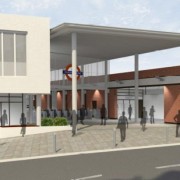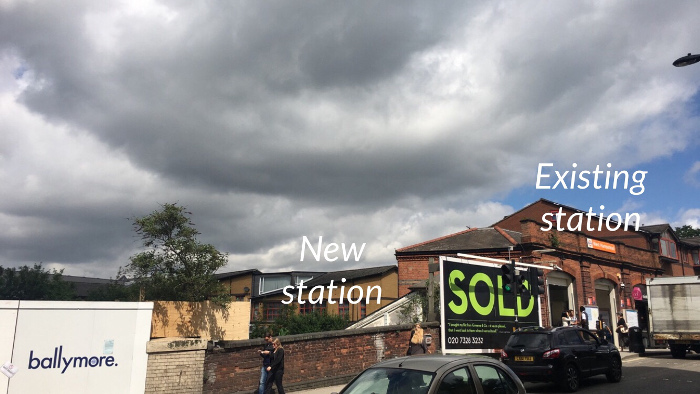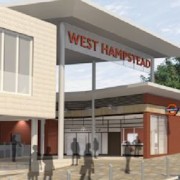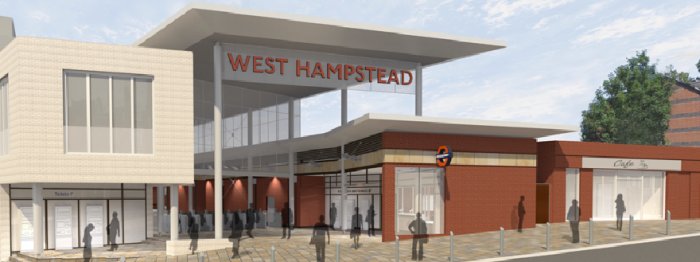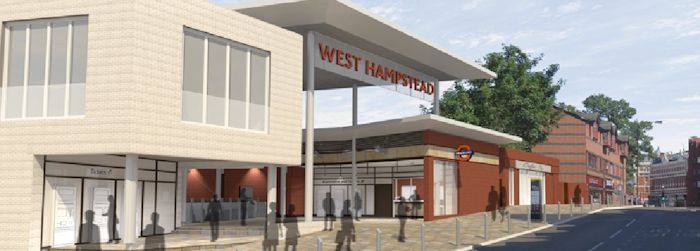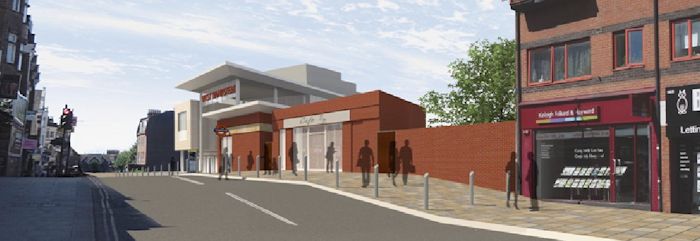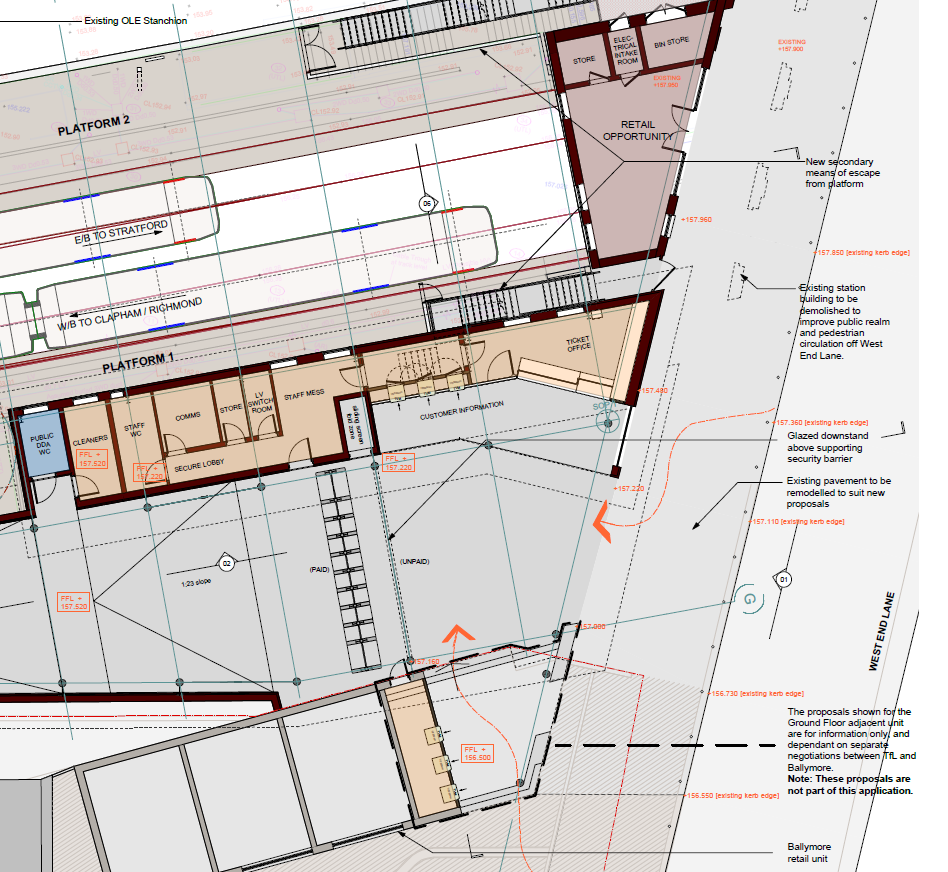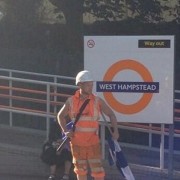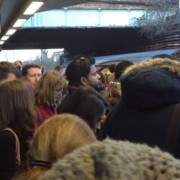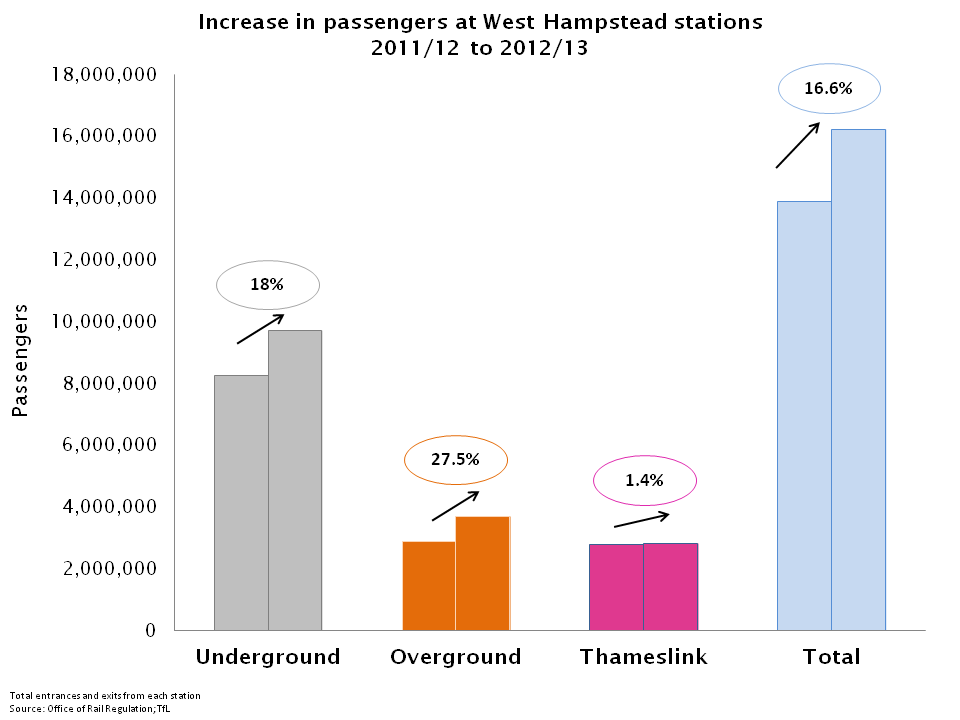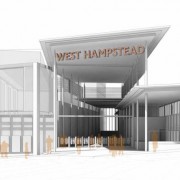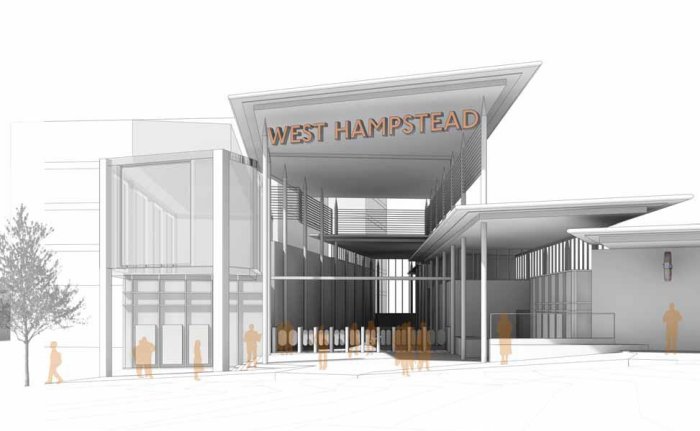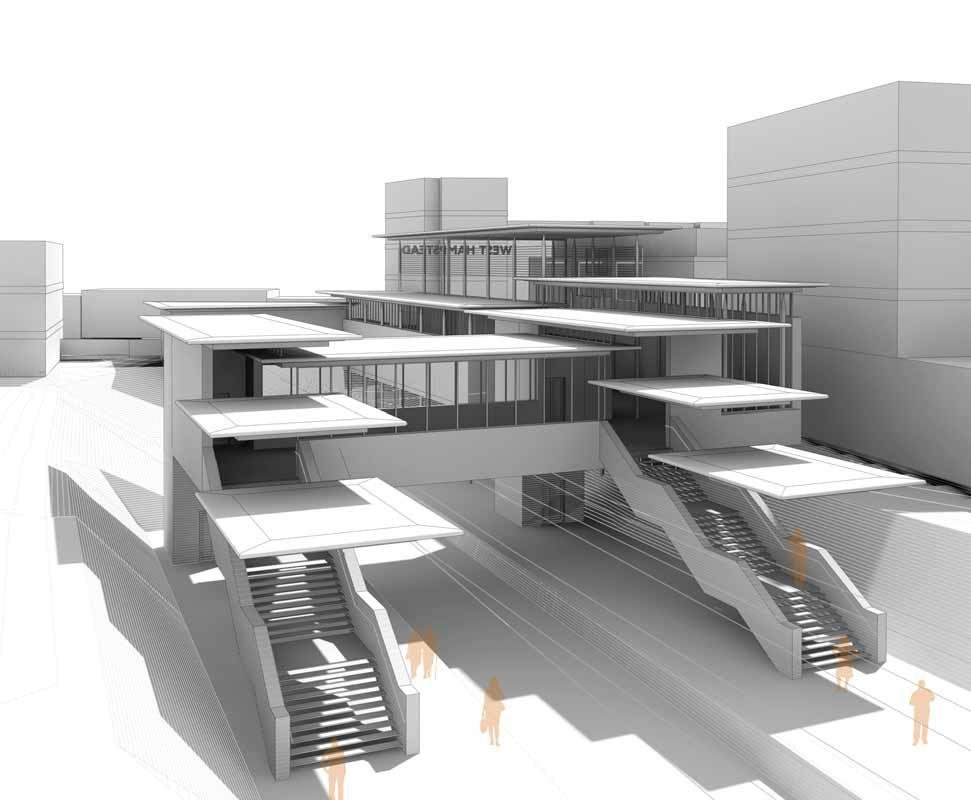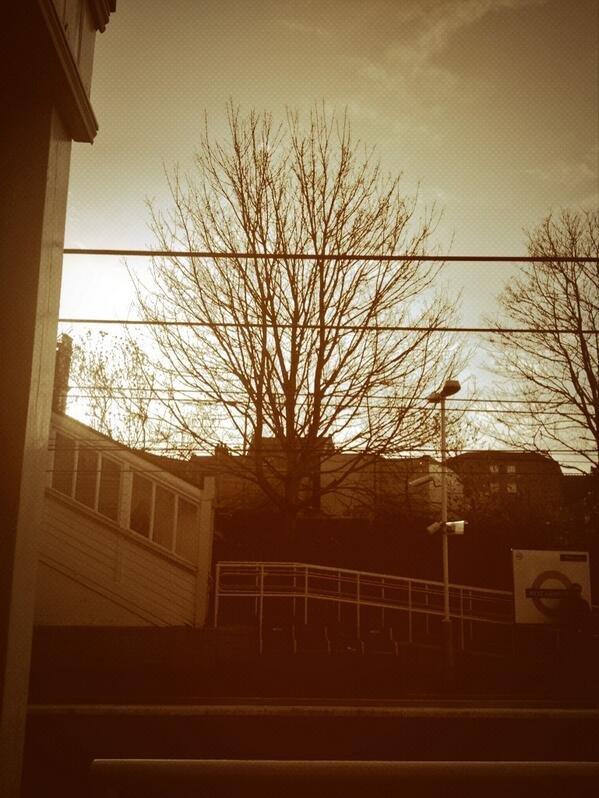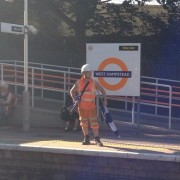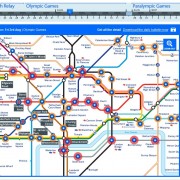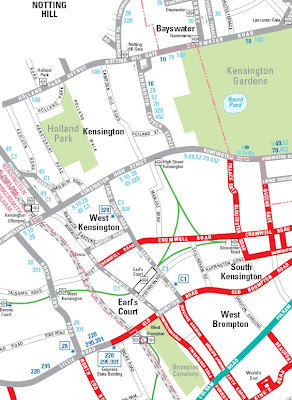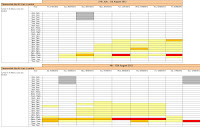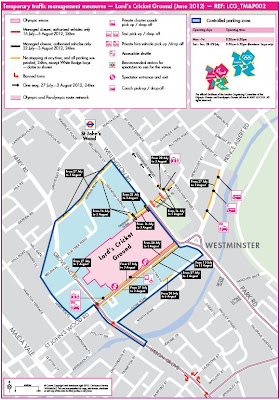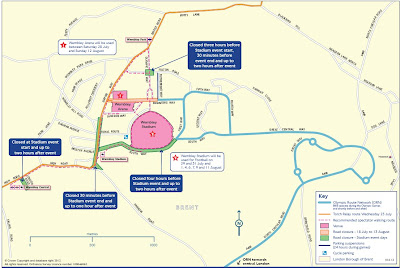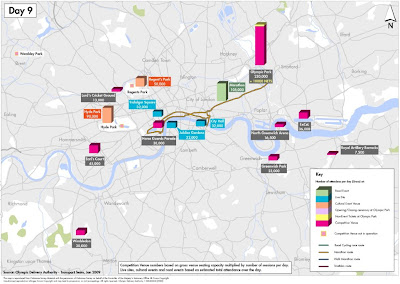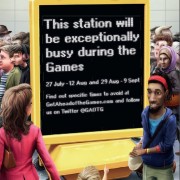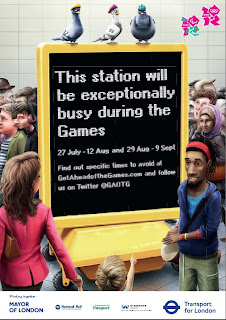At the end of last month, Camden held its annual public meeting on transport issues in the north of the borough for the first time. A good proportion of the questions on the night related to the local area.
Overground
WHAT (West Hampstead Amenities & Transport) asked for an update on the platform and lifts upgrades at West Hampstead Overground station.
 |
Work will start on new Overground station next year
Photo via James Lovett |
Some context is needed here. TfL have recognised that the Overground station needs an overhaul. It handles more than 3 million passengers a year, making it one of the busier train stations in the country. According to WHAT, a new footbridge and station building, with lifts and wide access, will be constructed about halfway down the existing platforms. This will allow the station building to continue to function until the new one is ready. The first stage will be to lengthen and widen the platforms to allow use of 5-car trains on the Overground (which are due early 2015). Building work on the station is expected to take place during 2014, with completion hoped for in early 2015.
WHAT has lobbied for this for the last two years and wants to ensure that the provision of lifts is co-ordinated with the Ballymore housing development next door. The money that TfL allocated for installing the lifts was on a use-it-or-lose-it basis, but given the length of the Ballymore build, it will have to be applied for again. The consensus seems to be that there won’t be a problem in having it awarded again.
Cycle hire at West Hampstead Thameslink
Emily Turner asked whether TfL had considered expanding Cycle Hire to West Hampstead Thameslink? The existing plan is to expand the Barclays “Boris” Bike scheme around Westminster and the City of London where demand is greatest. TfL has no plans to expand further north-west. In 2012, the scheme extended to Camden Town, with the northernmost docking station on Castlehaven Road towards Chalk Farm. A further extension to West Hampstead would require a number of docking stations throughout the area to the north-west of Swiss Cottage, which, say TfL may presentsome topographical and operational difficulties.
TfL met with Camden officers in March 2013 to discuss Camden’s aspirations for Cycle Hire and these will be considered within wider discussions for the building programme in the King’s Cross area.
Personally, I think our part of NW London should look at one of the alternative bike hire schemes that are popping up elsewhere in the country. These require less infrastructure than Boris Bikes and would benefit people moving around the area rather than just commuting to and from work, which would lead to limited numbers of bikes being available during the day. I’m looking into this in more detail.
West End Lane disruptions
WHAT asked if Camden could outline how it plans to deal with disruptions, such as those occurring on West End Lane due to burst water mains?
The council explained the impact the bridges and train lines have on the options for road diversions around West Hampstead, which can lead to bus passengers being a long way off course. It also said that planning for unexpected disruptions is difficult and usually consists of diversions and these will be announced by the driver. On occasion a disruption will sometimes lead to a longer term response being required, which may include the use of information at bus stops.
Bus stops
WHAT (again) asked TfL for an update on bus reliability and on the use of information during bus journeys, and live information at key locations to keep passengers informed of changes and delays to buses.
TFL has a large amount of bus data available, which is used to measure performance by the bus operators and enforce service level agreements in contracts. Camden said it would consider paying for real-time bus information at key locations in West Hampstead through Section 106 money (the money paid by developers to offset the impact of new developments).
Jubilee Line
WHAT asked TFL to provide an update on Jubilee Line closures and the impact these have on the West Hampstead community, particularly during the Christmas period. It also pointed out that more explanation about the nature of the works would be appreciated, rather than “engineering works” being a catch-all term.
TFL confirmed that essential maintenance to reline a section of the tunnel near Bond Street started on June 16th and will require three remaining closures and two late Sunday starts in 2013, with some intermittent closures also required in 2014 and possibly 2015.A full list of all planned closures is available on the TfL website.
Around Christmas, the Jubilee Line will be closed from Waterloo to Finchley Road from Thursday 26th December to Monday 30th Dec.
Traffic lights and other issues
WHAT asked for an update on the proposal to improve the traffic lights outside West Hampstead tube station.
The installation of secondary signals at the West End Lane / Broadhurst Gardens junction is scheduled for this financial year.
June Perrin: Could Camden review the traffic light sequence at the junction of Kilburn High Road and Quex Road?
An scheme is being developed in this area, which could include the phasing of the signals.
Mel Wright asked whether there are plans to improve pedestrian crossing times along Kilburn High Road, perhaps using the live countdown technology.
TFL confirmed that Quex Road has been identified as one of 200 sites in London for the implementation of live countdown
Maryam Alaghband: Could TFL could comment on the traffic light system at Swiss Cottage gyratory where traffic going south onto Park Road collides with traffic coming from Avenue Rd and going to Finchley Rd?
David Harris: Can the traffic lights from Finchley Road and Fitzjohns Avenue be timed so that both lights do not allow the traffic to move together in such a way that the traffic becomes a racing track where the motorists cross in front of one another in order to reach the right lane?
Same answer to both questions: “TfL is reviewing this site and although there are likely to be significant challenges in terms of maintaining network resilience at this location by the full or partial removal of the gyratory system, TfL will be seriously considering the options available and will welcome community involvement in the development of these plans.”
David Douglas: Can TFL plant more trees at the gyratory to combat air pollution; and can air quality information at Swiss Cottage be publicised?
The ground conditions along Finchley Road have proved to be very challenging for planting new trees. TfL proactively looks for suitable places to plant new trees, but on this occasion, the ground conditions meant that this area was not suited, and the trees would not have prospered.
An overview of pollution levels in Camden is published on the London Air Quality Network website and there is specific data for the Swiss Cottage monitoring station.

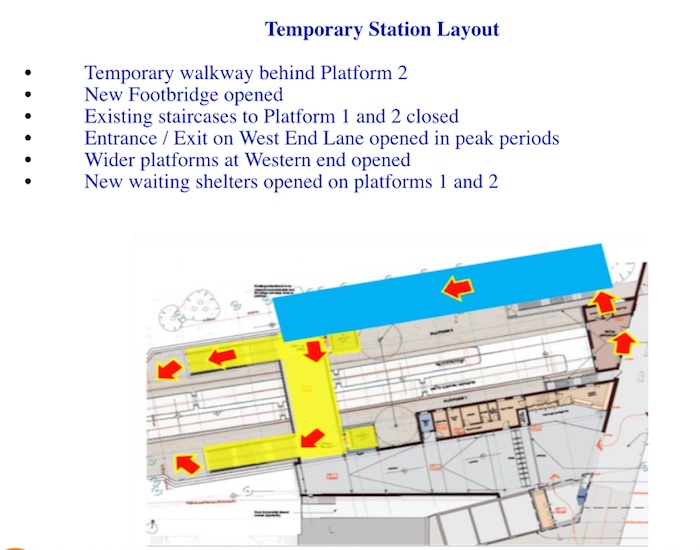


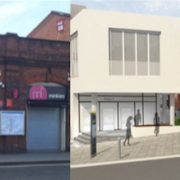


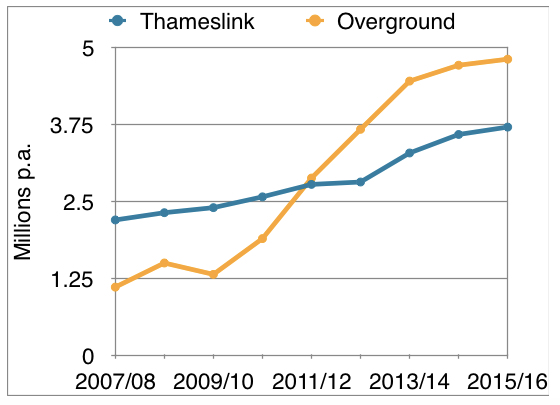
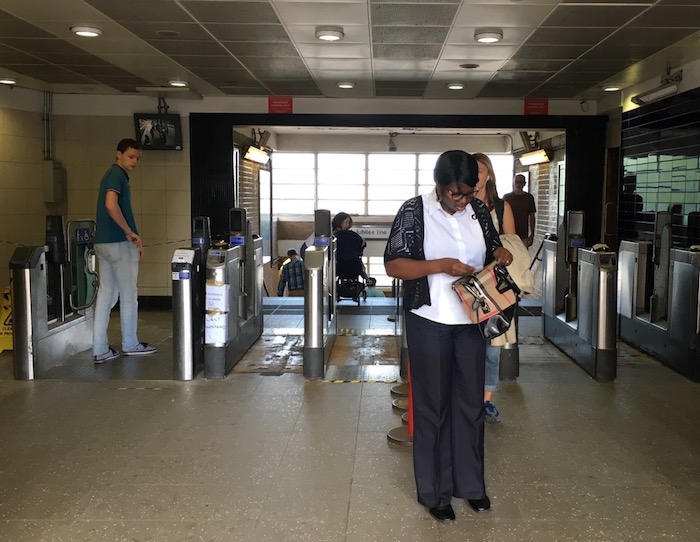
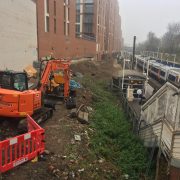
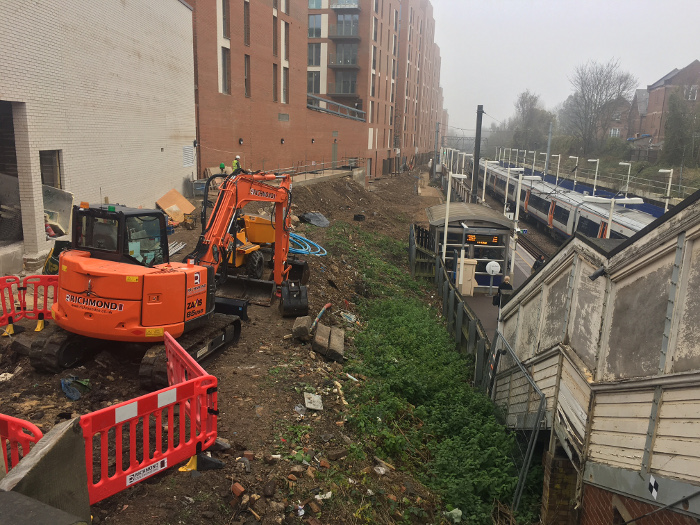
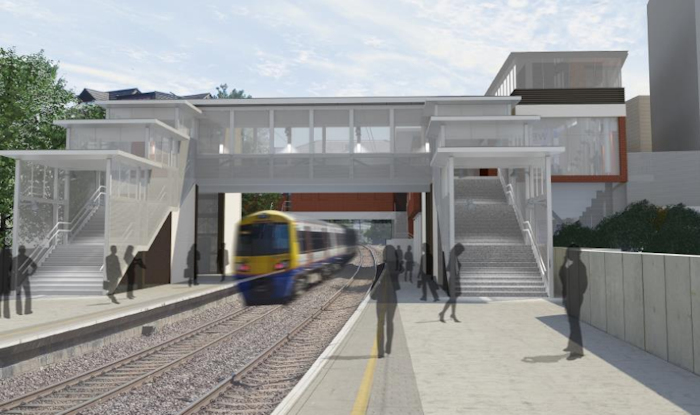
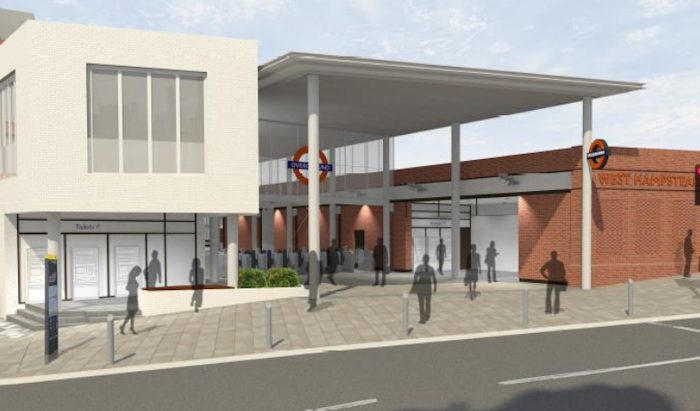
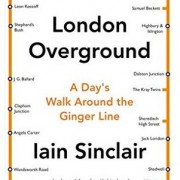
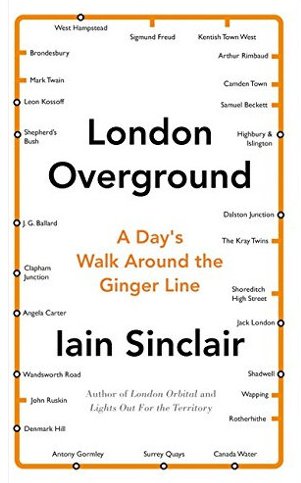 Iain Sinclair came to West Hampstead library on July 4 for a Q&A about his latest book, “London Overground: A Day’s Walk Around the Ginger Line”, and before too long the colour question came up. The Hackney-based author, who walked along in hearing distance of the 33-station ring at the heart of the Overground, called the branding for the ever-expanding network “toxic orange”.
Iain Sinclair came to West Hampstead library on July 4 for a Q&A about his latest book, “London Overground: A Day’s Walk Around the Ginger Line”, and before too long the colour question came up. The Hackney-based author, who walked along in hearing distance of the 33-station ring at the heart of the Overground, called the branding for the ever-expanding network “toxic orange”.